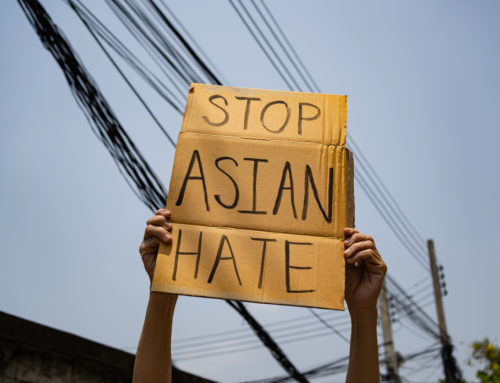Ahmed Mohamed’s treatment by teachers and police show us the extent to which Islamophobia has spread to schools
September 17, 2015
by Deepa Iyer, for Aljazeera America
The experience of Ahmed Mohamed — a Sudanese Muslim high school freshman who was suspended and arrested in Irving, Texas, after his teachers and administrators believed that a clock he made was a bomb — has caught America’s attention. Even President Barack Obama and Mark Zuckerberg weighed in, inviting Mohamed to the White House and Facebook, respectively. But these gestures, as sincere as they are, cannot by themselves counteract the reasons the incident happened in the first place: the pervasiveness of anti-Muslim bias in our country and the discriminatory application of school discipline policies against brown, Muslim and immigrant students.
To his teachers and school administrators, Mohamed’s faith and name made him an immediate suspect capable of endangering the safety of his fellow students. This is not a new phenomenon. During the 14 years since 9/11, young people who are South Asian, Muslim, Hindu, Sikh and Arab have reported that they often feel unsafe and unwelcome in their schools because of harassment and bullying related to their faith, national origin or immigration status. According to “Growing in Faith” (PDF), a report from the Coalition of American-Islamic Relations, 50 percent of American Muslim students in California reported “being subjected to mean comments and rumors about them because of their religion.” (Reporting incidents to an adult such as a teacher or principal had mixed results, with 35 percent saying that doing so “never,” “rarely” or “sometimes” helped.) “Go Home, Terrorist” (PDF), a 2014 report published by the Sikh Coalition found that more than 50 percent of Sikh students report being bullied. The number rose to 67 percent for Sikh youths who wear turbans.
Such bullying and harassment in schools take place in a broader context. Discriminatory media narratives and government programs reinforce public opinions that individuals who are Muslim or perceived to be Muslim are worthy of suspicion. Federal policies such as surveillance, racial mapping and CVE (countering violent extremism), robustly enforced under the Obama administration, contribute to this suspicion-filled environment — one in which a boy named Ahmed Mohamed is perceived as a terrorist rather than as a curious student of science and technology.
This rush to judgment occurs in the educational system as well, mainly because of the enforcement of zero-tolerance disciplinary policies that have long targeted black, Native American and Latino students. The Advancement Project reports that more than 70 percent of students referred to police are Latino or black. Students report that administrators and safety officers treat minor infractions as cause for suspensions, detentions, expulsions and even arrests. One could hardly label Mohamed’s actions as offenses or infractions. Yet he had to face six police officers and the principal who interrogated him about was called his hoax bomb. He was searched and handcuffed. He was suspended from school for three days. He was taken to a juvenile detention center, where he had a mug shot taken, was fingerprinted and then searched again. The following day, the school sent parents a letter about the incident and asked that any suspicious activity be reported, essentially further endorsing a culture of fear rather than dismantling it.
Read the complete article in Al Jezeera America.


